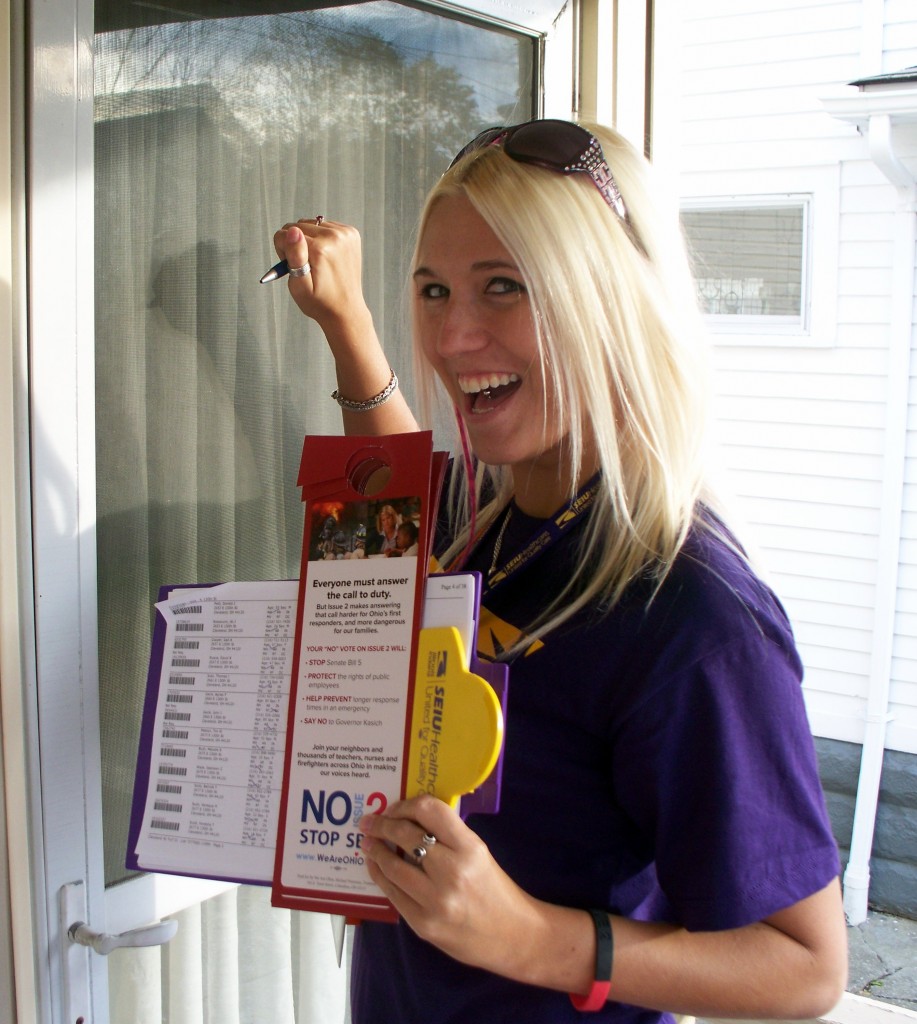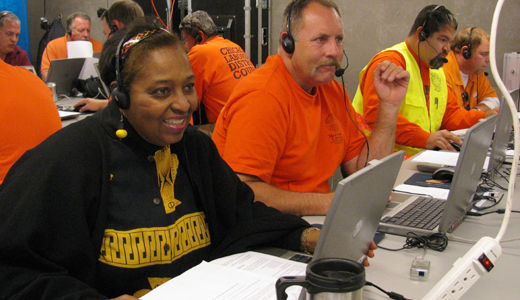 This week in the National Review, Jonathan Collegio offers some strong insights into the big muscles labor unions flex in every election cycle. Unions and their allies in the media would like nothing more than to keep the negative focus on the evil 1% donors like the Koch brothers, Sheldon Adelson and the “Super PACs” and continue to promulgate the myth of elections controlled by corporate billions. As Collegio writes, “Many roll their eyes and ask: How can Big Labor ever spend more than Big Business?” It’s simple, actually. Businesses are in business to make and then take a profit and a business doesn’t stay in business for too long if its decision makers are in the habit of throwing good money after bad. Unions, on the other hand, rarely if ever have to justify their spending to anyone, including their members. If a company makes poor financial decisions customers are lost and profits suffer (and heads eventually roll); if a union throws away tens of millions of dues dollars on political exploits there’s always much much more where that came from. Collegio makes a comparison to the arms race between the U.S. and the Soviet Union during the Cold War. The U.S. had a robust free-market economy that dwarfed the economy of the Soviet bloc and yet military spending on both sides was about equal. How could that be? Because the Soviet Union was spending up to 40% of its GDP on militarization while the thriving U.S. economy was devoting only a small fraction of its own. Percentage of income spent on politics by corporations and unions is similarly lopsided; corporations pour their billions into growth and return on investments; unions throw their kitchen sink at getting their friends reelected and little else. By some estimates, American businesses spend as little as .02% of profits on politics and the bulk of that goes to lobbying, not influencing elections.
This week in the National Review, Jonathan Collegio offers some strong insights into the big muscles labor unions flex in every election cycle. Unions and their allies in the media would like nothing more than to keep the negative focus on the evil 1% donors like the Koch brothers, Sheldon Adelson and the “Super PACs” and continue to promulgate the myth of elections controlled by corporate billions. As Collegio writes, “Many roll their eyes and ask: How can Big Labor ever spend more than Big Business?” It’s simple, actually. Businesses are in business to make and then take a profit and a business doesn’t stay in business for too long if its decision makers are in the habit of throwing good money after bad. Unions, on the other hand, rarely if ever have to justify their spending to anyone, including their members. If a company makes poor financial decisions customers are lost and profits suffer (and heads eventually roll); if a union throws away tens of millions of dues dollars on political exploits there’s always much much more where that came from. Collegio makes a comparison to the arms race between the U.S. and the Soviet Union during the Cold War. The U.S. had a robust free-market economy that dwarfed the economy of the Soviet bloc and yet military spending on both sides was about equal. How could that be? Because the Soviet Union was spending up to 40% of its GDP on militarization while the thriving U.S. economy was devoting only a small fraction of its own. Percentage of income spent on politics by corporations and unions is similarly lopsided; corporations pour their billions into growth and return on investments; unions throw their kitchen sink at getting their friends reelected and little else. By some estimates, American businesses spend as little as .02% of profits on politics and the bulk of that goes to lobbying, not influencing elections.  Deluded union members love to tell anyone that will listen that it’s illegal for their union to spend dues money on politics. Well, sort of. True enough, hard money campaign donations must be collected (or extorted) separately from members and be filtered through a union PAC. However the big political spending by unions isn’t delivered as a check to the campaign or in high profile ad buys. Unions flex their financial muscles in the grassroots and in ways that are nearly impossible to track and quantify; donations of office space and the free use of union call centers and tech support; copying, mailings, robocalls and door hangers; event planning and hosting; and the mother of all untracked political donations, unionized shoe leather. Unions will dedicate all their organizing staff full time to political arm-twisting by early August even in a slow election year. (Imagine for a moment the outcry if every Wal-Mart assistant manager in America was shipped to a swing state this fall to “volunteer.”) Unions will also take advantage of “lost timer” provisions in contracts to pull members out of the shop to knock doors, and often in critical races that may be on the other side of the country. And the cost of sending staff and members to knock doors in far-flung political battlegrounds is swept under the rug as part of the cost of running the union. Then there are the thousands of sham community organizations and front groups, large and small –Working America, America Votes and ACORN to name a few — that accomplish little beyond registering and persuading voters and are supported almost entirely by the “charitable donations” of international and local unions. Finally, businesses like to hedge their bets when it comes to political spending. As a matter of fact, in the 2010 election cycle business interests split their donations 53% to 47% in favor of Democrats. Unions, on the other hand, throw it all behind them that brought them to the dance, and that is very rarely a Republican.
Deluded union members love to tell anyone that will listen that it’s illegal for their union to spend dues money on politics. Well, sort of. True enough, hard money campaign donations must be collected (or extorted) separately from members and be filtered through a union PAC. However the big political spending by unions isn’t delivered as a check to the campaign or in high profile ad buys. Unions flex their financial muscles in the grassroots and in ways that are nearly impossible to track and quantify; donations of office space and the free use of union call centers and tech support; copying, mailings, robocalls and door hangers; event planning and hosting; and the mother of all untracked political donations, unionized shoe leather. Unions will dedicate all their organizing staff full time to political arm-twisting by early August even in a slow election year. (Imagine for a moment the outcry if every Wal-Mart assistant manager in America was shipped to a swing state this fall to “volunteer.”) Unions will also take advantage of “lost timer” provisions in contracts to pull members out of the shop to knock doors, and often in critical races that may be on the other side of the country. And the cost of sending staff and members to knock doors in far-flung political battlegrounds is swept under the rug as part of the cost of running the union. Then there are the thousands of sham community organizations and front groups, large and small –Working America, America Votes and ACORN to name a few — that accomplish little beyond registering and persuading voters and are supported almost entirely by the “charitable donations” of international and local unions. Finally, businesses like to hedge their bets when it comes to political spending. As a matter of fact, in the 2010 election cycle business interests split their donations 53% to 47% in favor of Democrats. Unions, on the other hand, throw it all behind them that brought them to the dance, and that is very rarely a Republican.




